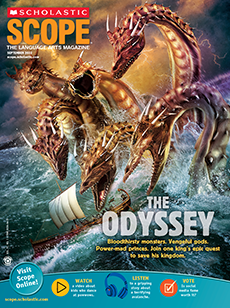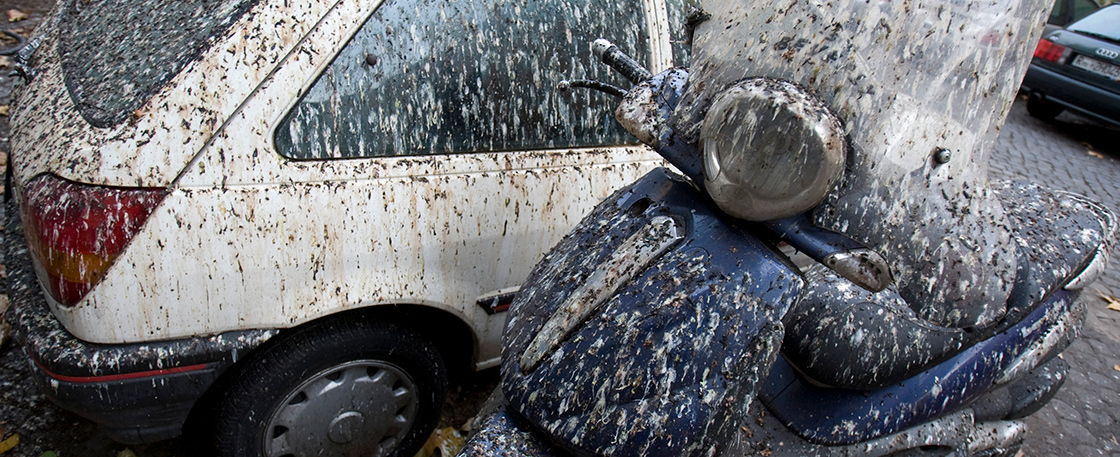“The Great Bird Poop Disaster” (30 minutes)
Read the article as a class. Then break students into groups to discuss the following close-reading questions.
Close-Reading Questions
- Reread the first three paragraphs of the article. Why might author Anna Starecheski wait until the third paragraph to reveal that “the cause was bird poop”? (author’s craft) Starecheski likely waits to reveal that “the cause was bird poop” to create suspense. She is also setting the reader up for a surprise; most people probably do not think that bird poop could cause cars to skid off roads. This surprise draws the reader more deeply into the narrative—he or she will want to know how bird poop could have caused such chaos.
- What is the main purpose of the section “Danger”? (text structure) The main purpose of this section is to explain the problems that large amounts of bird poop can cause.
- On page 18, Starecheski explains that birds like pigeons and starlings thrive in cities. What evidence does she provide to support this idea? (key ideas and supporting details) Starecheski supports the idea that birds like pigeons and starlings thrive in cities by including facts about the number of birds in certain cities. For example, on page 17, she writes that 4 million starlings invaded Rome, and on page 18, she writes that there are an estimated 7 million pigeons in New York City. On page 18, she explains that cities make ideal homes for birds because cities have few predators, many places to nest, and plenty of food for birds.
- On page 18, Starecheski writes, “As a result, the birds have reproduced to the point of overpopulation.” Based on context clues, what does overpopulation mean? (vocabulary in context) Based on context clues, overpopulation is a condition in which a population grows too large to be contained or supported in the space in which that population lives. In this case, cities can’t sustain the number of birds.
- According to the section “Too Many Birds,” birds have plenty to eat in cities because of the availability of garbage and because people feed them. How does birds having plenty to eat in cities contribute to the problem of bird poop in cities? (key ideas and details) Food attracts and sustains birds, so the more food there is for birds in a city, the more birds there will be in that city. And the more birds there are, the more bird poop there is.
- What do the photo and caption on page 18 add to the article? (text features) The photo shows a guano-covered island off the coast of Peru. The caption explains that poop from seabirds has been used as fertilizer for centuries. This detail offers another point of view on bird poop: While bird poop can be a menace, it can also be valuable and useful.
As a class, read the article “How to Solve the Problem of Bird Poop” on page 19. Then discuss the following questions, which draw on both articles.
Close-Reading Questions
- Why might New York City have decided to release hawks in one of its parks? (synthesis) In “The Great Bird Poop Disaster,” Starecheski explains that part of the reason bird poop is such a problem in cities is that there are too many birds (18). And one reason there are so many birds in cities is that, unlike in the wild, birds have few predators in cities (18). Releasing hawks in a New York City park could help control the pigeon population there by introducing a predator into the pigeons’ environment.
- According to both articles, what role do humans play in the bird poop problem? According to both articles, humans have contributed greatly to the bird poop problem. In “The Great Bird Poop Disaster,” Starecheski explains that there are many birds in cities because humans have created “a wonderful home” for birds (18). In “How to Solve the Problem of Bird Poop,” Starecheski explains that bird populations could be reduced if people stopped feeding birds (19). In other words, humans have contributed to overpopulation by feeding birds.
- How does reading both “The Great Bird Poop Disaster” and “How to Solve the Problem of Bird Poop” give readers a better understanding of the problem of bird poop? By reading both articles, readers get an understanding of the causes and effects of bird poop in cities as well as practical ideas for what can be done to help solve this problem.
Critical-Thinking Question
- Come up with an idea of your own for how to reduce bird poop in cities. Explain why your idea would be successful. Answers will vary.


